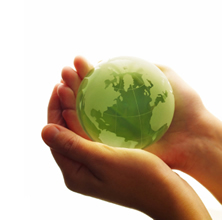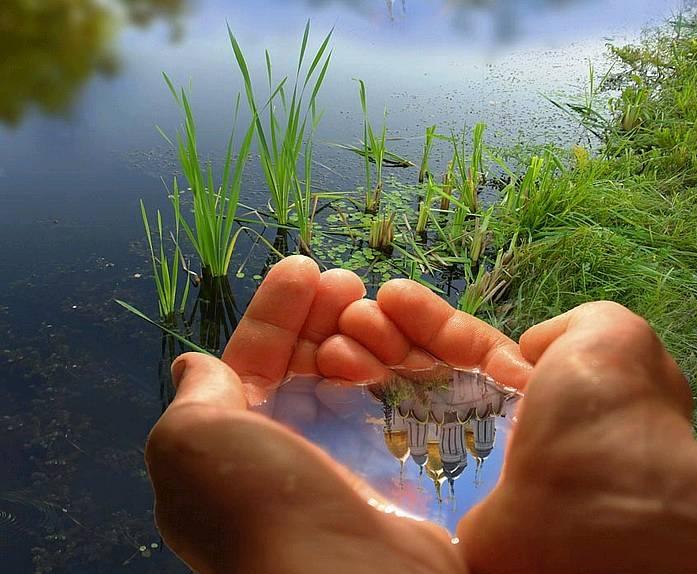Soil pollution comprises the pollution of soils with materials, mostly chemicals, that are out of place or are present at concentrations higher than normal which may have adverse effects on humans or other organisms. It is difficult to define soil pollution exactly because different opinions exist on how to characterize a pollutant; while some consider the use of pesticides acceptable if their effect does not exceed the intended result, others do not consider any use of pesticides or even chemical fertilizers acceptable. However, soil pollution is also caused by means other than the direct addition of xenobiotic (man-made) chemicals such as agricultural runoff waters, industrial waste materials, acidic precipitates, and radioactive fallout.
Both organic (those that contain carbon) and inorganic (those that don't) contaminants are important in soil. The most prominent chemical groups of organic contaminants are fuel hydrocarbons, polynuclear aromatic hydrocarbons ( PAHs ), polychlorinated
biphenyls ( PCBs ), chlorinated aromatic compounds, detergents, and pesticides. Inorganic species include nitrates, phosphates, and heavy metals such as cadmium, chromium and lead; inorganic acids; and radionuclides (radioactive substances). Among the sources of these contaminants are agricultural runoffs, acidic precipitates, industrial waste materials, and radioactive fallout.
Soil pollution can lead to water pollution if toxic chemicals leach into groundwater, or if contaminated runoff reaches streams, lakes, or oceans. Soil also naturally contributes to air pollution by releasing volatile compounds into the atmosphere. Nitrogen escapes through ammonia volatilization and denitrification . The decomposition of organic materials in soil can release sulfur dioxide and other sulfur compounds, causing acid rain. Heavy metals and other potentially toxic elements are the most serious soil pollutants in sewage. Sewage sludge contains heavy metals and, if applied repeatedly or in large amounts, the treated soil may accumulate heavy metals and consequently become unable to even support plant life.
In addition, chemicals that are not water soluble contaminate plants that grow on polluted soils, and they also tend to accumulate increasingly toward the top of the food chain. The banning of the pesticide DDT in the United States resulted from its tendency to become more and more concentrated as it moved from soil to worms or fish, and then to birds and their eggs. This occurred as creatures higher on the food chain ingested animals that were already contaminated with the pesticide from eating plants and other lower animals. Lake Michigan, as an example, has 2 parts per trillion (ppt) of DDT in the water, 14 parts per billion (ppb) in the bottom mud, 410 ppb in amphipods (tiny water fleas and similar creatures), 3 to 6 parts per million (ppm) in fish such as coho salmon and lake trout, and as much as 99 ppm in herring gulls at the top of the food chain.
The ever-increasing pollution of the environment has been one of the greatest concerns for science and the general public in the last fifty years. The rapid industrialization of agriculture, expansion of the chemical industry, and the need to generate cheap forms of energy has caused the continuous release of man-made organic chemicals into natural ecosystems. Consequently, the atmosphere, bodies of water, and many soil environments have become polluted by a large variety of toxic compounds. Many of these compounds at high concentrations or following prolonged exposure have the potential to produce adverse effects in humans and other organisms: These include the danger of acute toxicity, mutagenesis (genetic changes), carcinogenesis, and teratogenesis (birth defects) for humans and other organisms. Some of these man-made toxic compounds are also resistant to physical, chemical, or biological degradation and thus represent an environmental burden of considerable magnitude.
Numerous attempts are being made to decontaminate polluted soils, including an array of both in situ (on-site, in the soil) and off-site (removal of contaminated soil for treatment) techniques. None of these is ideal for remediating contaminated soils, and often, more than one of the techniques may be necessary to optimize the cleanup effort.
The most common decontamination method for polluted soils is to remove the soil and deposit it in landfills or to incinerate it. These methods, however, often exchange one problem for another: landfilling merely confines the polluted soil while doing little to decontaminate it, and incineration removes toxic organic chemicals from the soil, but subsequently releases them into the air, in the process causing air pollution.
For the removal and recovery of heavy metals various soil washing techniques have been developed including physical methods, such as attrition scrubbing and wet-screening, and chemical methods consisting of treatments with organic and inorganic acids, bases, salts and chelating agents. For example, chemicals used to extract radionuclides and toxic metals include hydrochloric, nitric, phosphoric and citric acids, sodium carbonate and sodium hydroxide and the chelating agents EDTA and DTPA. The problem with these methods, however, is again that they generate secondary waste products that may require additional hazardous waste treatments.
In contrast to the previously described methods, in situ methods are used directly at the contamination site. In this case, soil does not need to be excavated, and therefore the chance of causing further environmental harm is minimized. In situ biodegradation involves the enhancement of naturally occurring microorganisms by artificially stimulating their numbers and activity. The microorganisms then assist in degrading the soil contaminants. A number of environmental, chemical, and management factors affect the biodegradation of soil pollutants, including moisture content, pH, temperature, the microbial community that is present, and the availability of nutrients. Biodegradation is facilitated by aerobic soil conditions and soil pH in the neutral range (between pH 5.5 to 8.0), with an optimum reading occurring at approximately pH 7, and a temperature in the range of 20 to 30°C. These physical parameters can be influenced, thereby promoting the microorganisms' ability to degrade chemical contaminants. Of all the decontamination methods bioremediation appears to be the least damaging and most environmentally acceptable technique.
Herbicides are chemicals used to kill weeds and unwanted plants while pesticides are substances that kill unwanted insects and pests. Fertilizers supply nutrients to plants to help them grow but can contain heavy metals which can be harmful to the animals, including humans, that eat the plant say the Food and Fertilizer Technology Center. Reducing the use of or finding natural alternatives to toxic substances can help prevent soil pollution, according to the National Science Digital Library
Reuse and Recycle
Contribute less waste to help prevent soil pollution. Purchase glass and other reusable containers instead of throwing away plastic or paper regularly. Recycle paper and plastic through your local waste management company to reduce the amount of waste that is sent to a landfill. The National Science Digital Library, NSDL, reports that reusing and recycling products will help conserve natural resources and save more land from contamination.
Proper Solid Waste Treatment
Waste should be disposed of properly to avoid soil pollution. Lobby your community to adopt ways to treat waste before disposing it to prevent pollution. For example, the NSDL suggests that acidic and alkaline waste be neutralized before they are disposed of so they won’t contaminate the soil. Waste that is biodegradable should be broken down in a controlled environment before being disposed of because it is a much faster, resource-saving method.





































